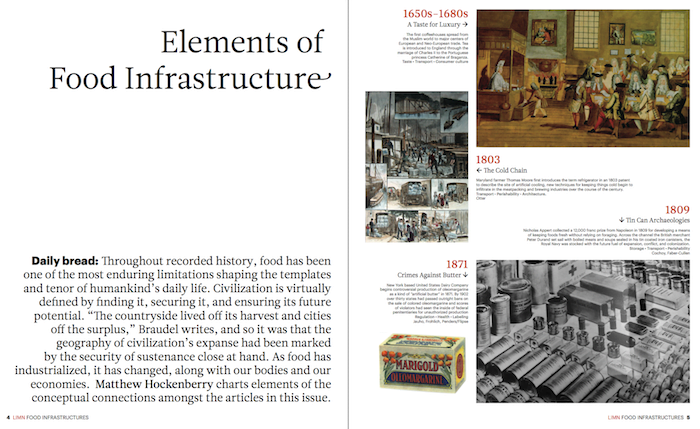The editors of LIMN were kind enough to let me contribute a small historical overview to the recent Food Infrastructures issue. While I’m no expert in food studies (other than in the eating of it), I think it serves as a reasonable primer (particularly with regard to packaging, production, distribution, and data) for the articles that follow.

As the introduction reads:
Infrastructures are those invisible, unappreciated, and often mundane arrangements that support the carrying out of everyday tasks. For example, shopping for food typically involves a retail space with a characteristic internal organization and products of standardized content, size, and packaging. Only when the organization is changed, or a desired product is missing, does the arrangement become visible to consumers. But infrastructures are visible to those who operate them. And they are exceptionally visible to end-users when they fail because they are essential to the smooth operation of society. They create conditions for economic activity, produce collective security, and introduce reliability and predictability into the world. In this sense they are vital systems, indispensable to the reproduction of contemporary forms of life and indeed to life itself. This also makes them vulnerable and in need of protection. The availability of food and its efficient distribution to the population is a case in point: nations typically have in place elaborate plans to ensure national primary agricultural production and food provision in times of crisis.
If this read isn’t to your liking there is certainly a healthy amount of competition in the food timeline market.


